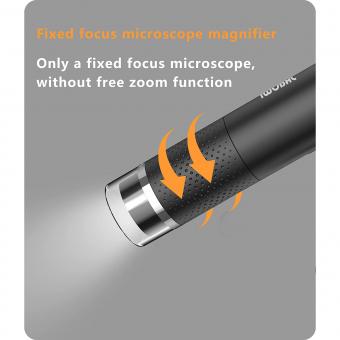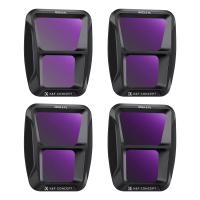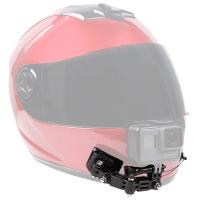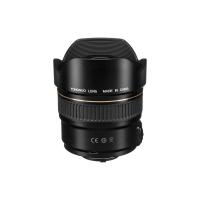What Do Spores Look Like Under A Microscope?
Spores can have different shapes and sizes depending on the type of organism they come from. However, in general, spores are small, single-celled structures that are usually round or oval-shaped. When viewed under a microscope, spores can appear as small, dark dots or circles, often with a distinct outer membrane or wall. Some spores may also have appendages or other structures that help them attach to surfaces or move through the environment. Overall, the appearance of spores under a microscope can provide important clues about the identity and characteristics of the organism that produced them.
1、 Size and Shape

Spores are reproductive structures produced by fungi, plants, and some bacteria. They are typically small and can vary in size and shape depending on the species. When viewed under a microscope, spores can appear as single cells or as clusters of cells.
Size and shape are important characteristics used to identify different types of spores. For example, fungal spores can range in size from 1 to 100 micrometers and can be spherical, oval, or elongated in shape. Bacterial spores, on the other hand, are typically smaller and more uniform in shape, often appearing as small rods or spheres.
Recent advances in microscopy techniques have allowed for more detailed analysis of spores, including their internal structures and chemical composition. This has led to new insights into the role of spores in the spread of diseases and the development of new treatments for fungal and bacterial infections.
Overall, the appearance of spores under a microscope can provide valuable information about the species and their reproductive strategies. By studying spores, scientists can gain a better understanding of the diversity and complexity of the natural world.
2、 Color and Texture

Spores are reproductive structures produced by fungi, plants, and some bacteria. They are typically small, single-celled structures that are dispersed by wind, water, or other means to colonize new areas. When viewed under a microscope, spores can have a variety of colors and textures depending on the species.
In general, fungal spores are round or oval-shaped and can range in size from a few micrometers to several millimeters. They can be smooth or have a textured surface, and their color can range from white to black, with many shades of brown, yellow, and green in between. Some spores have distinctive features, such as a thick outer wall or a unique shape, that can help identify the species.
Recent advances in microscopy technology have allowed scientists to study spores in greater detail than ever before. For example, high-resolution electron microscopy can reveal the ultrastructure of spores, including the arrangement of their cell walls and organelles. This information can provide insights into the evolutionary history and ecological roles of different spore-producing organisms.
Overall, the appearance of spores under a microscope can provide valuable information about the identity and biology of the organisms that produce them. By studying spores, scientists can better understand the diversity and complexity of the natural world.
3、 Cell Wall and Membrane

What do spores look like under a microscope? Spores are reproductive structures produced by fungi, plants, and some bacteria. They are typically small, single-celled structures that are highly resistant to environmental stressors such as heat, radiation, and desiccation. When viewed under a microscope, spores appear as small, round or oval-shaped structures with a thick outer layer called the cell wall.
The cell wall of spores is composed of complex polysaccharides and proteins that provide structural support and protection against environmental stressors. The cell membrane, which lies just beneath the cell wall, is a thin, flexible layer that regulates the movement of molecules in and out of the spore.
Recent advances in microscopy techniques have allowed scientists to study spores in greater detail than ever before. For example, high-resolution electron microscopy has revealed the intricate structure of spore walls and membranes, including the presence of specialized proteins and lipids that play important roles in spore formation and germination.
Overall, the appearance of spores under a microscope can vary depending on the species and environmental conditions. However, their characteristic cell wall and membrane structures make them easily identifiable and distinguishable from other types of cells.
4、 Nucleus and Cytoplasm

Spores are reproductive structures produced by fungi, plants, and some bacteria. When viewed under a microscope, spores can have different shapes and sizes depending on the species. However, they generally have a distinct structure that includes a nucleus and cytoplasm.
The nucleus is the central part of the spore that contains genetic material. It is surrounded by cytoplasm, which is a gel-like substance that contains various organelles and molecules necessary for the spore's survival and growth. The cytoplasm also contains ribosomes, which are responsible for protein synthesis.
In fungi, spores are typically produced in specialized structures called sporangia or fruiting bodies. These structures protect the spores and help them disperse to new locations. When viewed under a microscope, fungal spores can have a variety of shapes, including spherical, oval, or elongated. Some spores have distinctive features such as ridges, spikes, or appendages that aid in their dispersal.
Recent advances in microscopy techniques have allowed scientists to study spores in greater detail. For example, electron microscopy can reveal the ultrastructure of spores, including the arrangement of organelles and the composition of the cell wall. Additionally, fluorescence microscopy can be used to visualize specific molecules within the spore, such as proteins or lipids.
Overall, spores are fascinating structures that play an important role in the life cycle of many organisms. By studying spores under a microscope, scientists can gain insights into their structure, function, and evolution.




































